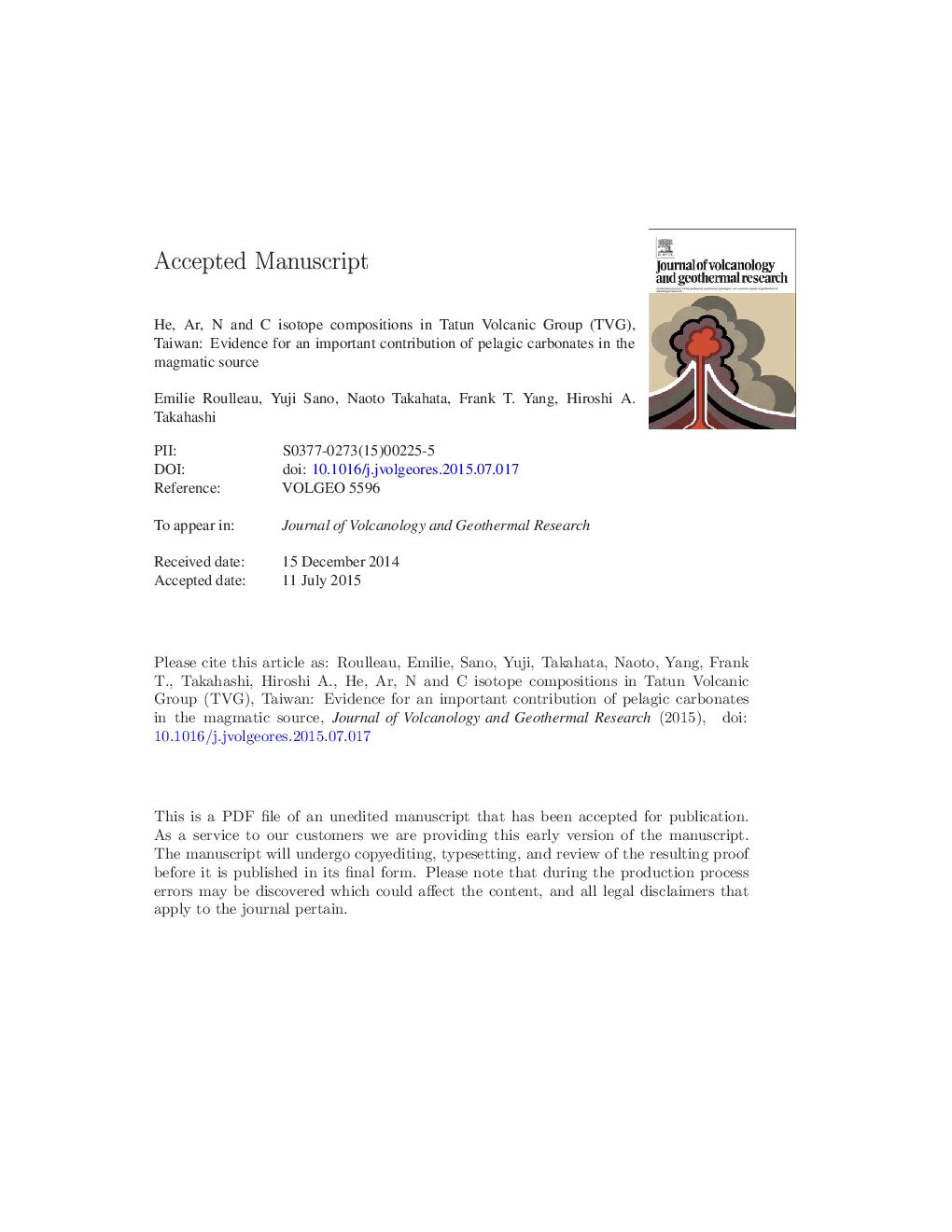| Article ID | Journal | Published Year | Pages | File Type |
|---|---|---|---|---|
| 6439876 | Journal of Volcanology and Geothermal Research | 2015 | 40 Pages |
Abstract
The Tatun Volcanic Group (TVG), Northeastern Taiwan, is considered to be the extension of the Ryukyu arc, and belongs to the post-collisional collapse Okinawa Trough. Strong hydrothermal activity is concentrated along the Chinshan fault, and Da-you-keng (DYK) represents the main fumarolic area where the most primitive isotopic and chemical composition is observed. In this study, we present chemical and He, Ar, C and N isotopic compositions of fumaroles, bubbling gas and water from hot springs sampled in 2012 and 2013. High 3He/4He ratios from DYK fumaroles (â 6.5 Ra) show a typical arc-like setting, whereas other sampling areas show a strong dependence of 3He/4He and CH4/3He ratios with the distance from the main active hydrothermal area (DYK). This could mean strong crustal contamination and thermal decomposition of organic matter from local sediments. Carbon isotope compositions of DYK range from â 6.67â° to â 5.85â°, and indicate that carbon contribution comes mainly from pelagic carbonates from the slab (limestone, mantle and sediment contributions are 63%, 19% and 18%, respectively). This is consistent with the negative δ15N values (â 1.4 ± 0.5â°) observed for DYK, implying a strong nitrogen-mantle contribution, and an absence of contribution from nitrogen-pelagic carbonates. These results have important consequences related to the Ryukyu subducted slab. In fact, the Ryukyu margin presents little in off scraping the sedimentary cover to the subducting plate that does not permit any nitrogen contribution in magma from TVG.
Keywords
Related Topics
Physical Sciences and Engineering
Earth and Planetary Sciences
Geochemistry and Petrology
Authors
Emilie Roulleau, Yuji Sano, Naoto Takahata, Frank T. Yang, Hiroshi A. Takahashi,
